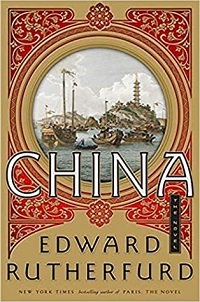Edward Rutherfurd's China takes an epic, multi-perspective look at 19th-century Chinese history
 For his newest epic about an intriguing world locale, Rutherfurd (Paris, 2013) dives into seventy years of Chinese history, beginning in 1839, as circumstances lead to the First Opium War, through the Boxer Rebellion and after.
For his newest epic about an intriguing world locale, Rutherfurd (Paris, 2013) dives into seventy years of Chinese history, beginning in 1839, as circumstances lead to the First Opium War, through the Boxer Rebellion and after. The novel has a tighter scope, time-wise, than his usual canvas, which allows for in-depth exploration of an overarching theme: China’s subjugation by Western powers, particularly Britain.
Taking the long view, Rutherfurd adeptly dramatizes the impact of and fallout from major events, including the Taiping Rebellion and the destruction of Beijing’s Summer Palace. His characters, among them British merchants, missionaries, Chinese government officials, peasants, pirates, and an artisan who rises high in service at the imperial palace through unusual means, assert their individuality while embodying beliefs on different sides of China’s internal and external conflicts.
The protagonists are predominantly men, but many fascinating women also feature in the story. Though the first third feels overly drawn-out, the novel takes an entertaining, educational journey through China’s rich and complex history, geography, art, and diverse cultures across a tumultuous epoch.
Edward Rutherfurd's China was published by Doubleday this May in the US, and I wrote this review (based on a PDF sent to me) for Booklist. The novel is 800pp long, and these days I find longer books easier to read in electronic form, so the PDF worked just fine. Your mileage may vary, though, and I have most of Rutherfurd's earlier novels in hardcover. My favorite among his work is The Princes of Ireland, the first in his two-book Dublin saga.
Published on May 23, 2021 08:50
No comments have been added yet.



